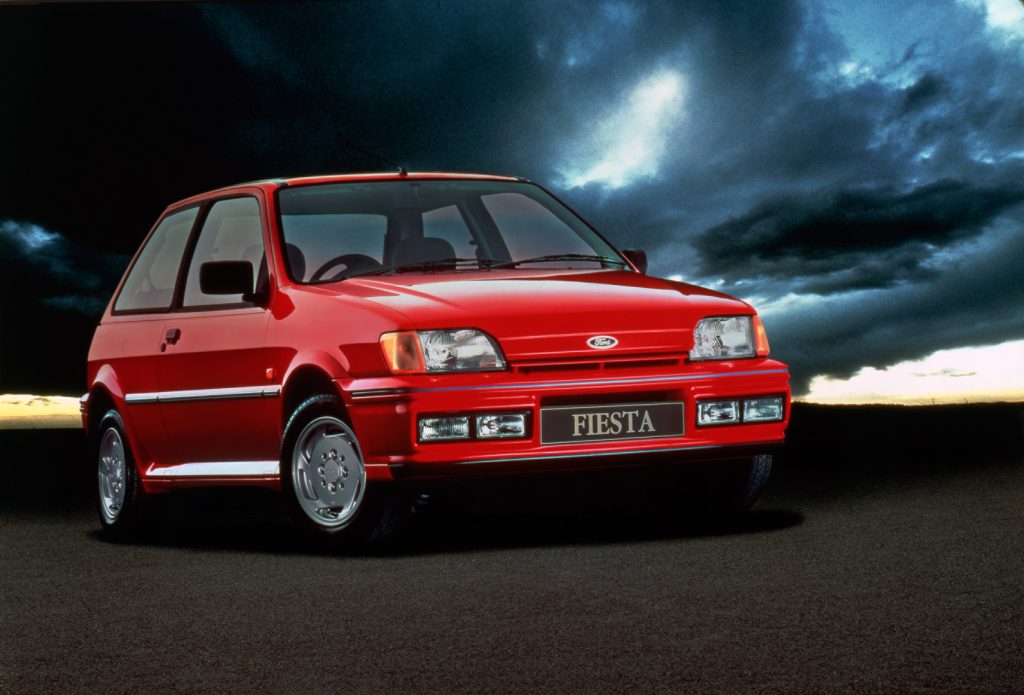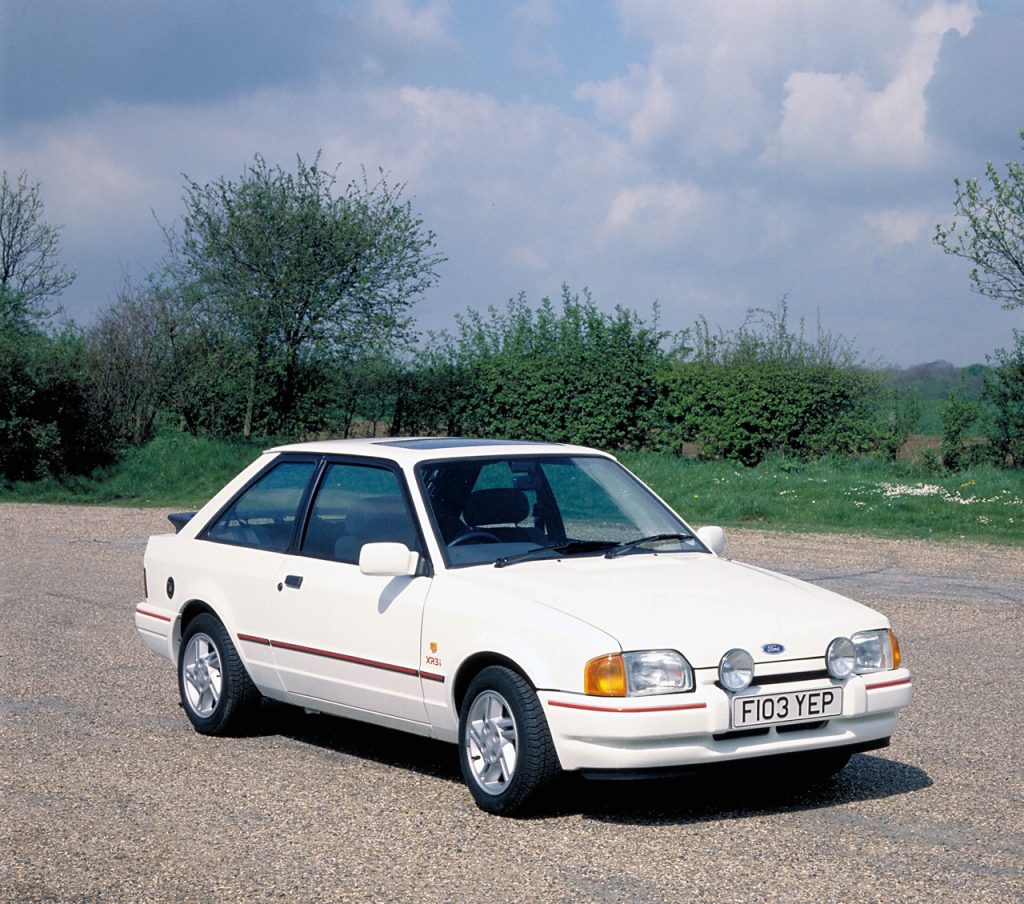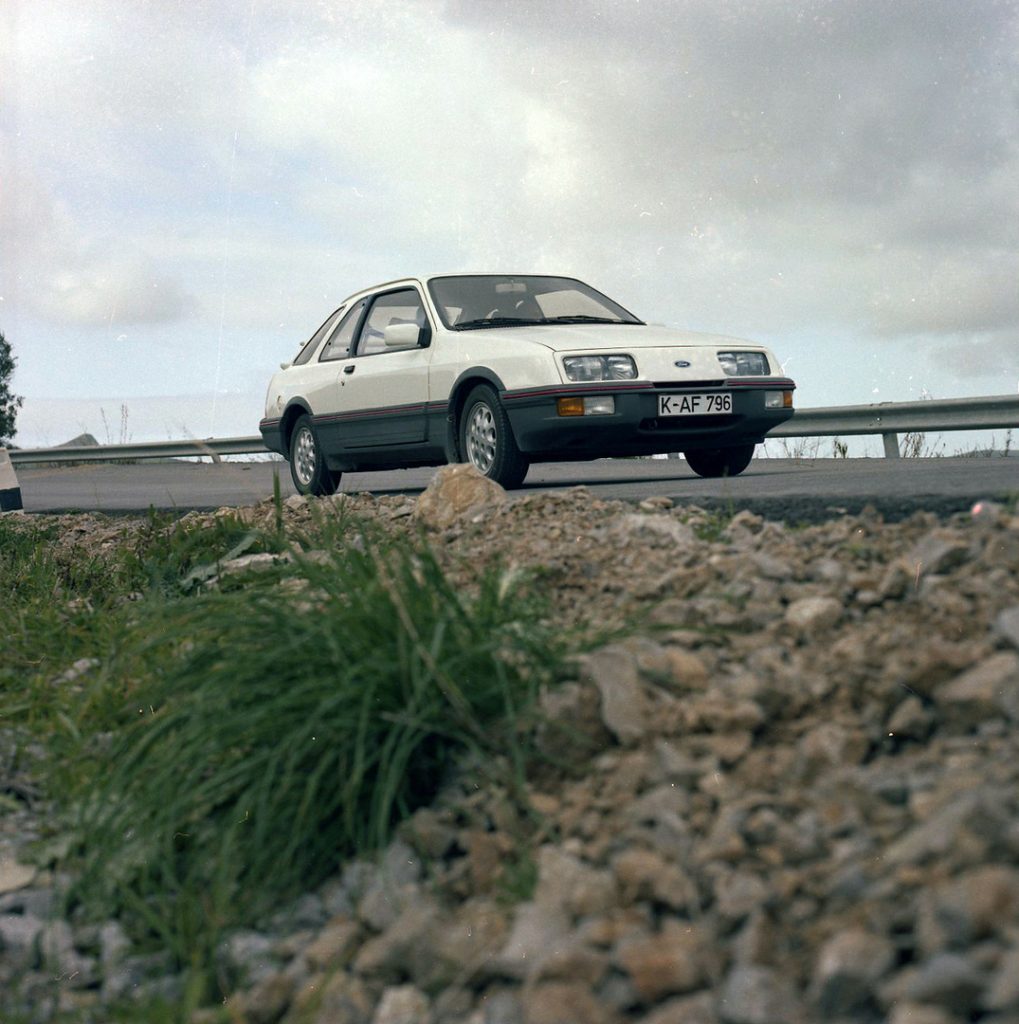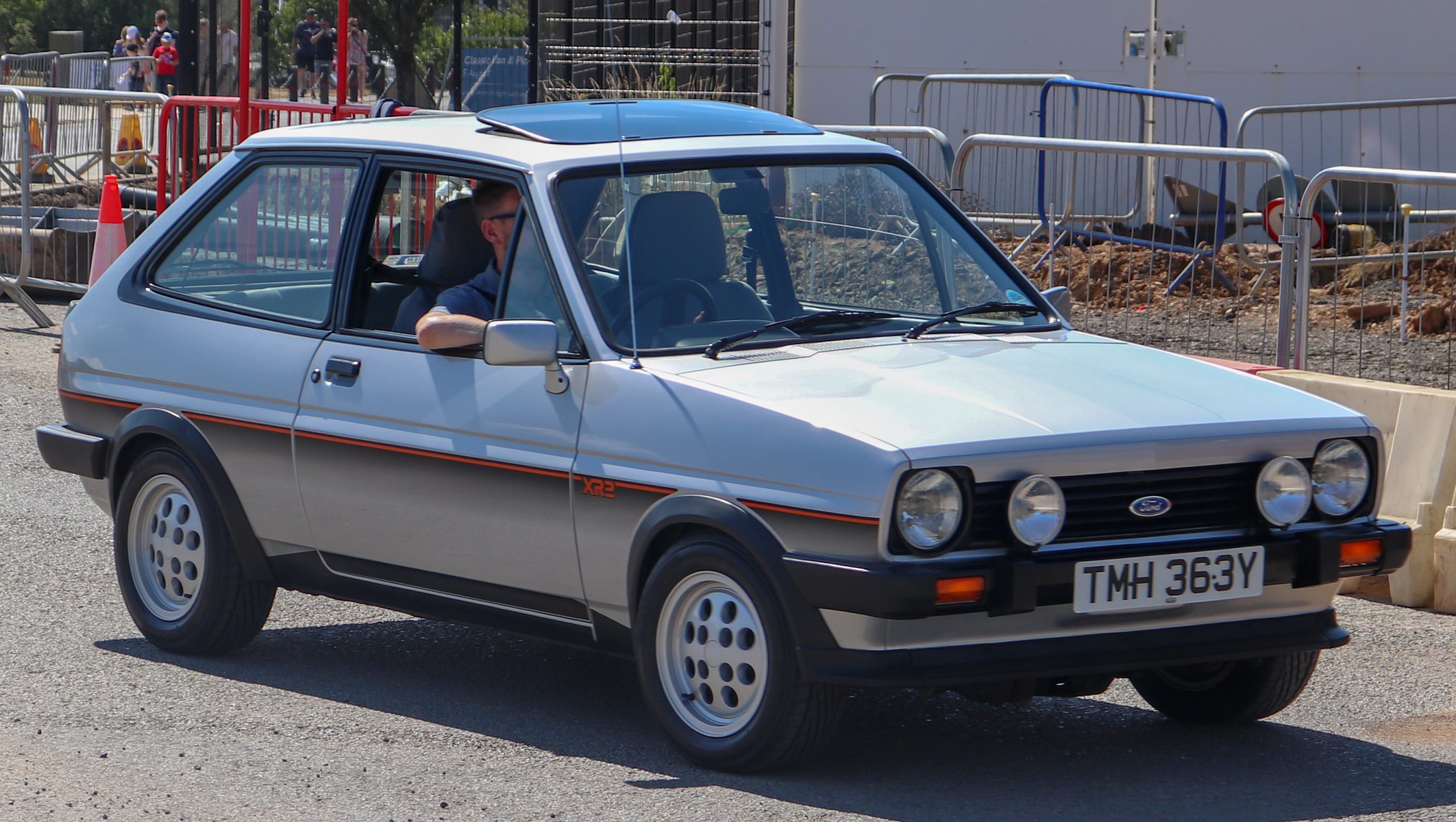Think fast Ford and your mind might conjure images of Sierra and Escort Cosworths, a searing Escort RS Turbo S1 wreathed in tyre smoke from the front wheels, or Mk I Escorts powersliding at ever-more ridiculous angles.
However, such cars were always relatively rare, and today they require the kind of money you’d need for the average supercar. Indeed, a Ford Sierra RS500 Cosworth will likely cost you more than a Ferrari Testarossa and a Porsche 911 Turbo combined.

However, there is salvation further down the Ford pecking order, and it comes in the form of the XR models. It’s a moniker that first came into life with the Mercury Cougar XR7 of the late 1960s, and it would continue to be used around the world as recently as 2016, with the final Falcon in Australia.
For British Fords, the XR label was a light that burned brightly between 1980 and 1994, only to become a victim of car crime culture and the resulting rise in insurance premiums. Since then, the space underneath the RS models has been taken by the ST line in Europe. While these Fords are more potent than their forebears, XR just sounds . . . well, better, doesn’t it?
Like all Blue Oval machines of the 1980s and ’90s, their values have soared, in the main due to exceptional rarity – for many years they were throwaway cars, and certainly not as revered as their RS brethren. However, that’s all changed now, as we’ll discover.
XR2 and XR2i

The success of the Fiesta Supersport prompted Ford into action in the burgeoning hot hatch market. Wind back to the late 1970s and Ford executives were of the firm opinion that its largely male performance-car audience would turn their noses up at a ‘shopping car’ and front-wheel drive. After all, the Ford heroes of the time were the Capri and the Escort.
However, Ford couldn’t ignore the success of Volkswagen’s Golf GTi and Renault’s hot 5, testing the water firstly with the S and then the Supersport. With just 67bhp to play with, the Supersport wasn’t in the same league, but thanks to a sexy bodykit, tartan seats, and aggressive marketing, the Supersport was a sales sensation. Three thousand sold within a year, prompting Ford to engage Special Vehicle Engineering to whip up something rather more special in just a year.
Launched in December 1981, the XR2 carried over much of the Supersport’s visual theatrics but blended it with a 1.6-litre Kent engine that produced 84bhp. Still some way short of class-leading hot hatchbacks, but the 0–60mph was under 10 seconds and it was £250 cheaper than the Renault 5 Gordini Turbo. It was a smash hit, selling 20,000 in two years and accounting for a quarter of all Fiestas sold.
When the Fiesta Mk II appeared in 1983, the XR2 took its next evolutionary leap. Still fed by a carb, it now had the XR3’s CVH 1.6-litre engine, which was good for 96bhp and a 9.5 second 0–60mph sprint. It was still carb-fed when its rivals were increasingly fuel injected, though the new engine was more flexible, revealing its peak torque and power higher up the rev range. The car was also much more comfortable, with extra sound-deadening courtesy of the Ghia, XR3-inspired seats, and a new dashboard, plus a five-speed manual gearbox. It was another sales success for the Blue Oval.
The Fiesta’s final XR fling came in 1989, firstly carrying over a freshly fuel-injected 8-valve CVH engine before moving to the new-for-the-1990s 16-valve Zetec engine. The XR2i arrived into a mature market for hot hatches – every manufacturer at the time had a hopped-up grocery-hauler and the XR2i’s initial 104bhp was far off the pace (the Zetec engine took this to 105bhp). Despite suspension revisions (it ditched the old car’s rear beam axle for a semi-independent torsion beam arrangement), it also wasn’t a tidy-handling machine either – but it didn’t matter. Its sharp body-kit and piercing body moulding stripe marked the XR2i as very special among the average McDonald’s car park cruisers.
However, by 1994 the car crime epidemic had made hot hatches difficult to insure, with the XR badge viewed especially badly. The XR2i died, to be replaced with the more anonymous-looking Si.
XR3 and XR3i

The Fiesta may have been a radical departure for Ford’s marketeers, but it wasn’t the firm’s first hot hatch. That came with 1980’s XR3, which was directly inspired by VW’s Golf GTI. At the time, Ford didn’t have any access to fuel injection, which meant approaching the concept of ‘sporty’ from a different angle. Under instruction from Bob Lutz, Richard Parry-Jones and Peter Hirst aimed the car at giving the company car driver an office car park edge with flashy graphics, trim upgrades, and a sportier style.
Its 96bhp CVH growled to 60mph in 9.2 seconds thanks to Lotus-inspired lightness compared to the more powerful Golf, with its handling enhanced by higher spring and damper rates, and a thicker anti-roll bar compared to standard Escorts. Launched with just four forward ratios, it gained a fifth in mid-1982 and fuel injection in October of that year. It was developed on a tiny budget, and Ford ended up selling 25,000 per year in the UK alone and 200,000 across Europe.
In 1986, the Escort was facelifted into Mk IV form, with a more sporting interior, a raised steering rack to rein in bump steer, and wider wheels. Power was up to 105bhp, and to tame it in you could specify Lucas-Girling-developed ABS for an extra £315 – quite something for a mass-market Ford at the time. The car was slightly heavier than its predecessor, but this didn’t weigh heavily on the buying public, as it sold in huge amounts.
This didn’t stop Ford from continually improving the car, with a fresh interior and variable-rate steering in 1989, with a Ford-developed EEC IV engine management system following in 1990 that liberated 108bhp. However, the game had moved on – though the RS Turbo was the hottest Escort in town, even that was blown away by the Vauxhall Astra GTE’s 150bhp.
The Mk 5 Escort would be the XR3i nameplate’s European swansong, though unlike its forefathers it wasn’t part of the launch line-up. Indeed, Ford didn’t bestow a sporty model on its much-maligned model until 1991, and that was the RS2000. However, its relatively discreet looks and massive insurance premiums meant it wasn’t a huge seller, so Ford delved into its stash of badge templates and brushed the dust off the XR3i moniker in a hope to revive fortunes.
Under the bonnet lay a choice of two 16-valve Zetec engines in 1.8-litre form. The 105bhp version offered a 0–60mph time of 9.8 seconds, while the 130bhp version dropped that to 8.5 seconds. Like the XR2i, 1994 saw the end of the XR3i badge in Europe, to be replaced with the toned-down Si model range.
XR4i and XR4x4

Though its underpinnings were tried and tested, the Sierra’s aerodynamically shaped body was a true hit to the system – its hatchback-only premise and unconventional styling (for a Ford) shocked conservative Britain. Sales lagged far behind where they should be, not helped by canny Ford dealers discounting remaining stocks of the old Cortina. Ford needed a halo car, and quick – enter 1983’s XR4i.
Developed by the Product Development Group in Cologne, the XR4i drew influence from the Probe III concept car that appeared a year before the Sierra’s 1982 launch. Under the bonnet lay a 150bhp 2.8-litre Cologne V6, but all the talk was about the biplane rear spoilers.
These spoilers gave the impression of a hardcore machine, but the XR4i was actually designed for long motorway journeys, with the spoilers optimised for efficiency – compared to the standard Sierra, the drag coefficient dropped 0.2 to 0.32. Although it wasn’t a strong seller, it certainly acted as a shot in the arm for Sierra sales and by the end of the decade the Blue Oval’s ‘jellymould’ had become a staple of the average UK high street.
The XR4i’s trajectory hasn’t been so kind – those unable to afford an RS Cosworth saw the XR4i as the next best thing and, well, it wasn’t – it’s a grunty GT cruiser. Most were modified, thrashed, and thrown away – very few are left. Those that do remain often have Cosworth-aping snouts – maybe we should campaign for original Sierra schnozzes?
The XR4i would live for just two years, with the XR4x4 briefly taking the mantle of the sportiest Ford in 1985, a year before the RS Cosworth. A response to the Audi Quattro, it used two viscous differentials, with two-thirds of the power sent to the rear wheels. Originally displayed as a three-door at the Geneva motor show, the UK market only got the five-door versions. Initially powered by the same mechanically fuel-injected 2.8-litre Cologne V6 as the XR4i, it was upgraded to an electronically fuel-injected 2.9-litre unit in 1987.
From 1990 onwards, the XR4x4 was available with either the V6 or a new twin-cam four-cylinder, and a year later this engine appeared in a brief revival of the XR4i name in two-wheel-drive form, though without any of the older car’s bespoilered visual allure, and was quickly rebadged as the GT. The XR4x4 bowed out with the rest of the Sierra range in 1993.
What to Pay
All fast Fords – and lots of merely swift ones, come to think of it – have accelerated in price compared to their contemporaries. However, while an RS Cosworth is £20,000 for a ropey example, you’ll buy the best XR4i in the UK for around half that. It’s similar further down the RS/XR comparison, from the 1980s Fiesta XR2 and XR2i of the early ’90s to the Mk 3 and Mk 4 Escort XRs of the ’80s.






